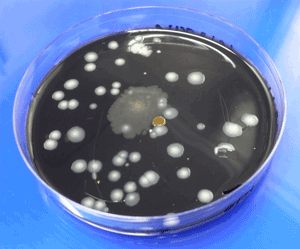Legionella Bacteria Testing

Legionella bacteria are colonizers of a wide range of aquatic environments such as ground waters, surface waters, lakes, rivers, marine waters, biofilms and man-made facilities like shower heads, aerators, cooling towers, air-conditioning ducts, potable water, hot water tanks, spas, whirlpools, humidifiers, plumbing systems and medical equipment in hospitals. Legionella are thin Gram negative bacilli, including species that cause Legionellosis or Legionnaires’ disease, most notably L. pneumophila. Legionella acquired the name after a July, 1976 disease outbreak among people attending a convention of the American Legion in Philadelphia. It was then identified by scientists at the Centers for Disease Control (CDC). The mystery disease sickened 221 persons and caused 34 deaths. Outbreaks of Legionnaire’s Disease are highly unpredictable, and fatality rates could be high. Sampling and testing for Legionella in water is useful in explaining outbreaks of legionellosis and could be used to determine the effectiveness of maintenance practices and control measures for, and to guarantee the safe use of hot water supplies and humidified ventilation systems.
It is believed that Legionella is transmitted by inhalation of small particles of contaminated water (aerosols) or soil. It may also enter the air-conditioning system if there is a break between its ducts and those of the cooling towers or evaporative condenser. As they are hardy, they thrive at warmer temperatures and can be transmitted through hot water supply systems. Within the community, large buildings such as hotels, community centres, industrial buildings, and apartment buildings are most often susceptible to Legionella infections as the air and water supplies are centralized.
Legionnaires’ disease usually begins with a headache and pain in the muscles. These symptoms are followed by high fever and shaking chills. Nausea, vomiting, and diarrhea may occur. On the second or third day, dry coughing begins and chest pain might occur. Difficulty with breathing is often reported. It usually strikes middle-aged people, although cases have been reported in all age groups. The disease frequently occurs in people whose resistance to infection has been reduced.
The likelihood of Legionella infection can be best reduced by good engineering practices in the operation and maintenance of all air and water handling systems. All water systems like cooling towers and evaporative condensers, water tanks should be inspected and thoroughly cleaned at least once a year. Corroded parts should be replaced. Air filters should be examined, cleaned and/or replaced periodically and tested for leaks. Building Maintenance Managers should regularly monitor air and water samples for presence of Legionella. Regular laboratory testing must be performed to monitor the quality of air and water systems.
MBL provides Legionella testing of both air and water samples. Easy to follow sample-specific protocols are available. The presence or absence of Legionella is confirmed and counts are reported as Colony forming units – CFUs. Recommendations are based on the outcome of analysis.
Should you have a question concerning either Legionella testing or any bacteria test that we have not listed, please call 905-290-9101.